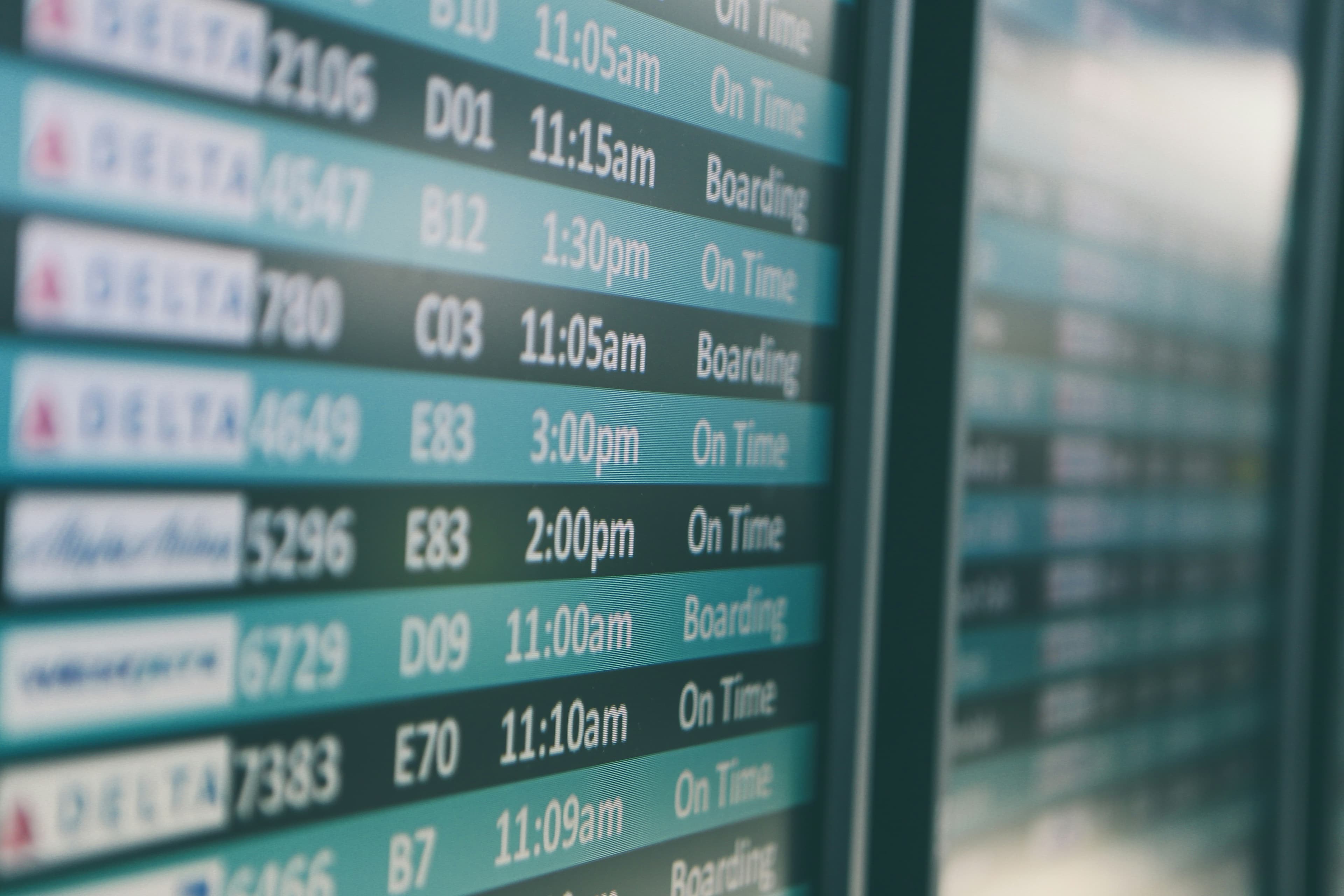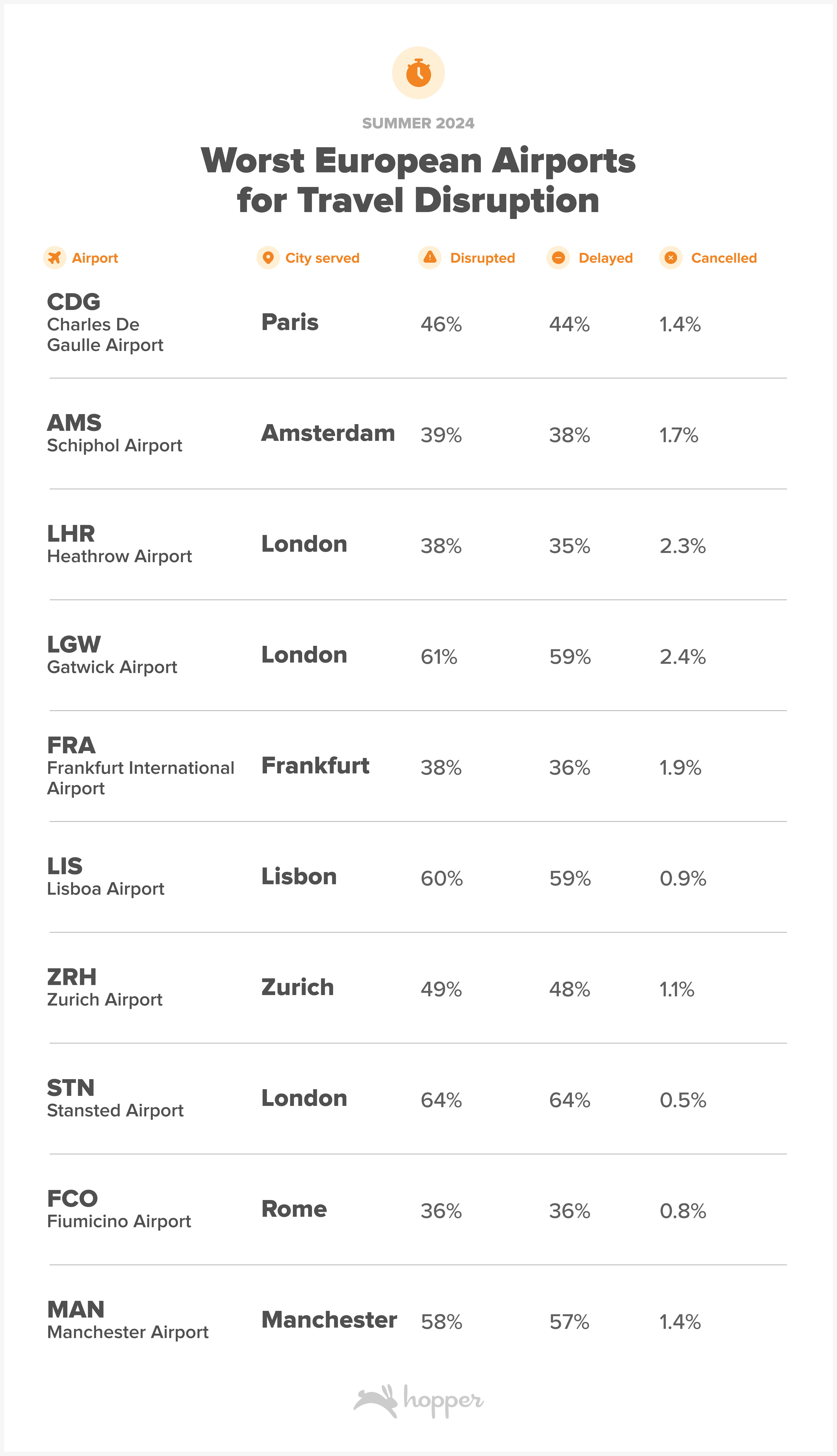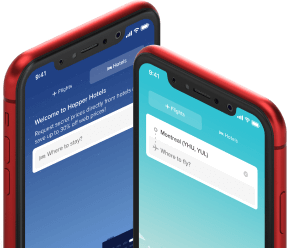Summer 2024 Travel Disruption Outlook
Thousands of post-holiday flights impacted by Hurricane Beryl. What to expect for summer travel disruptions?

Hayley Berg - Wed Jul 10 2024

Summer Travel Capacity Outlook
With summer in full swing, travelers across the US are looking ahead to a busy summer season! 2.8 million flights are set to depart from US airports between June and August of this year, carrying enough seats for more than 324 million passengers. This passenger capacity represents a 6% increase from schedules published for summer 2023, or an increase of nearly 18 million seats. Capacity gains have come as airlines optimize within their fleets to increase seat availability, without significantly increasing the number of flights on their schedules. This summer, only 1% more flights will depart from US airports, despite the 6% increase in seats.

Summer Travel Disruption
Headed into this summer, many travelers are braced for disruption. 45% of Hopper travelers have experienced some kind of disruption in the last year, with 3 in 4 experiencing delays and 36% experiencing cancellations. June, July and August are the busiest months of the year to travel, as school is out and millions of Americans head on vacation. Airlines operate larger networks during summer months to satiate the demand for trips and vacations around the world. Though summer typically brings fewer weather driven delays and cancellations (fewer ice storms, blizzards and tornadoes!), the higher volume of passengers and flights during summer months does often result in a spike in travel disruptions.
Last summer there was a 57% increase in travel disruption rates between May and July, the peak of the summer travel season. In total, 27% of flights were delayed or canceled on departure from US airports in July of last year, over 209,000 flights in total. Disruptions can happen for a number of reasons and can have a significant, negative impact on the travel experience.
Dallas Fort-Worth, Chicago O’Hare and Denver international airports are currently ranked as the worst airports for travelers headed into summer. These airports have the highest combined number of disrupted flights and percentage of flights disrupted, meaning flying through these ports comes with a bit of risk! If you’re planning to depart from or pass through any of these airports this summer, be sure to use our tips below to plan ahead.

Disruption to Europe
Europe is the top region for international travelers for the US this summer and we’re expecting to see long lines and crowds at many of the main destinations and connecting airports across the region this summer. For travelers on long haul trips to Europe it’s important to keep in mind the risk of missed connections when flights are delayed or canceled. More than 70% of travelers who have booked trips to Europe with Hopper for this summer will have at least one layover in order to arrive at, or return from their destination.
We’ve rounded up the 10 worst airports for summer travel based on last summer’s performance and ranked them below. Four of the worst airports saw disruption rates over 50% during the summer, while CDG saw a 46% disruption rate across June, July and August. With the Olympics ahead this summer, travelers should expect even longer lines and greater potential disruptions traveling to, or through CDG.

How to combat disruption this busy summer season
You can’t prevent disruption but you can prepare for it! Whether you’re in the planning process, headed out for your trip or already stranded, here are our tips for making your summer travel more seamless.
When you’re planning
Add Trip Protection: For the busy summer season especially, it's a smart idea to add trip protection to your travel plans. Some travel providers, like Hopper, offer Disruption Assistance which allows you to rebook a new flight immediately, regardless of carrier, if you’re delayed, canceled by the airline or you miss a connection. In a recent survey of Hopper travelers who experienced disruptions, only 24% of those who were canceled or missed a connection were rebooked on a flight for the same day. 1 in 4 of these travelers were never rebooked and had to cancel their trips! Hopper’s Disruption Assistance is a foolproof way to ensure you get to your destination as quickly as possible, if your trip gets disrupted! Today, 1 in 5 Hopper customers add Disruption Assistance when they book, to protect their purchase and experience.
Book with flexibility: With recent disruptions at the airport, travelers may want to consider adding extra flexibility to their upcoming travel plans in case they want to make last minute changes. Travelers should take advantage of plans like Cancel for Any Reason or Change for Any Reason available through some airlines and Hopper. With these plans, you can instantly cancel or change your itinerary without incurring any additional fees.
Take the first flight of the day: In general, flights departing after 9am are 2X more likely to be delayed than departures scheduled between 5-8am. To avoid travel disruption, fly as early in the morning as possible.
Book a long enough layover: Though you may be tempted to book the trip with the shortest travel time, beware of booking too short of a layover. Keep in mind that for international flights you may need to pass through security or passport control before getting onto your next leg of the trip. Be sure to include enough time for you to deplane, go through any potential security or control and walk to your next gate and board your next flight. For domestic flights we recommend at minimum a 45 minute layover and at least 90 minutes for international trips.
Build in a buffer day: Don’t leave it to chance! Particularly for big events or major trips, it's always better to be safe by baking in an extra day to get to your destination. This way you’ll have some wiggle room, should any delays or disruptions interfere with your travel plans.
Day Of Trip
Sign up for alerts & check flight status before you go to the airport: You’ll want to know about delays and cancellations as early as possible. On most U.S. carriers, passengers can sign up for text, email, and/or in-app notifications about any changes to their itinerary including delay and cancellations.
Know what options you have available: Know what other flights are headed to your destination the same day as your trip in case you’re disrupted and need to get on another flight. Be sure to check airline policies, many carriers will waive change fees if there is a weather advisory or give compensation/travel credit if your flight is canceled within a few hours of departure.
Make sure you arrive at the airport with a fully charged smart phone, and keep a charging cord with you! You may need to stay on the phone or use the app to make changes to your trip.
What to do if you’re stranded
Multitask - Get in line to speak with an airline representative at the same time you call the customer support center: During a major disruption there can be hundreds of other travelers trying to get support from airline representatives at one time. Get in line to speak with an agent in your terminal at the same time that you get on the phone to call the support center. Oftentimes an agent can reach you in the phone queue faster than an agent at the airport!
Skip the airport hotel: Airport hotels are often expensive given their convenience, and are likely to sell out during busy travel periods or when disruptions like bad weather hit a region. If you need to find a place to stay in a pinch, look beyond the airport for lower prices and more availability. Check the Hopper app for last minute deals on hotel stays in your area for the most savings.
Consider alternate airports: If you’re flying out of a major city or region with a few airport options, check departing flights from regional airports. In New York for example, you can check JFK, LGA and EWR, but also consider airports close to the area like Westchester or Islip.
Consider driving: When disruptions impact many flights at a single airport or across the US it can sometimes be challenging for airlines to rebook customers within a reasonable amount of time. This could mean you’re stranded for hours or days longer than intended. Depending on your destination, consider renting a car and driving the distance to your destination, or to an airport which does have a flight available for you to rebook.
Get the Hopper app to find the best deals.
You could save up to 40% on your next flight!
